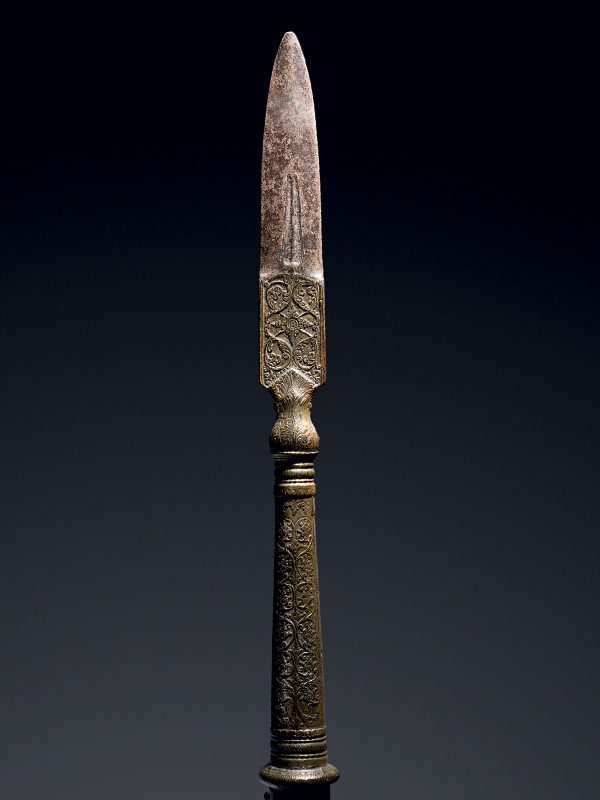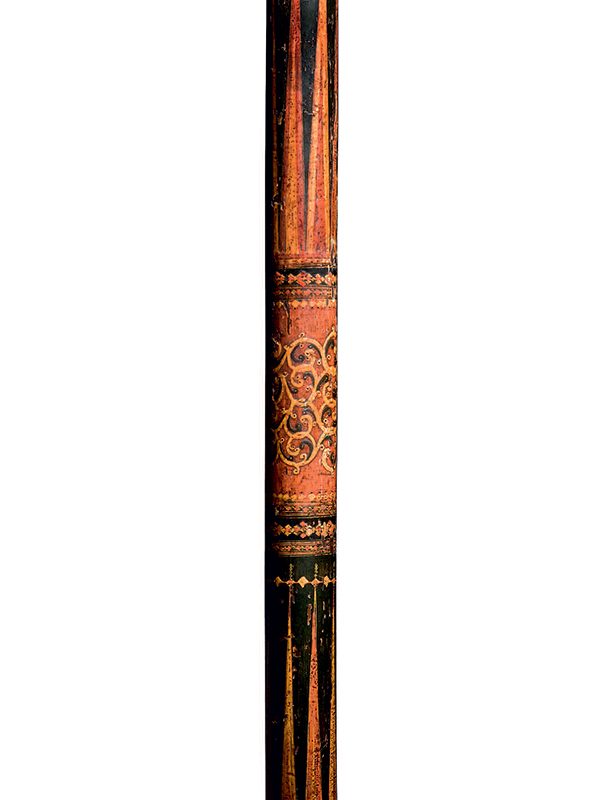Lacquered wood and steel halberd, patisthanaya
A large halberd or spear, of a type known as patisthanaya. The long wooden shaft is lacquered in red, black, yellow and green with various designs including scrolling and intertwined tendrils, wavy and geometric motifs. The steel halberd head has a dark patina, with a sturdy blade designed for use, and decorative chiselled elements at the base. The metal head of the spear is attached to the shaft with two long steel straps and two projecting steel lugs are fixed onto the shaft to further fix the head to the shaft. A simple, undecorated steel cap is fixed to the bottom.
A halberd consists of an axe blade and a sharp spike mounted on the end of a long staff. Halberds were made in many shapes and variations and the Ceylonese version, patisthanaya, is based on a design much like that of the European partizan.[1] The word halberd is probably an amalgamation of the German words Halm (staff), and Barte (axe). The halberd was the primary weapon of the early Swiss armies in the 14th and early 15th centuries and has been used as a court bodyguard weapon for centuries; indeed it is still the ceremonial weapon of the Swiss Guard at the Vatican. This unusually large and complete halberd is beautifully lacquered in designs of red, yellow and black typical of the decorative Kandy style[2]. The sturdy construction of the blade and the way it is fixed to the shaft with long straps and lugs, as well as the overall quality of this piece suggest that this was a fully functional weapon, rather than a processional piece or item used purely for status.
- Stone, C. A Glossary of the Construction, Decoration and Use of Arms and Armor in all countries and in all times together with some closely related subjects, New York 1999, p. 487
- Coomaraswamy, A. Mediaeval Singhalese Art, New York 1956, pl XLVII 10


